In the last couple of years vast areas of bamboo forest have flowered and died in Kerala’s Wayanad district and also in Coorg. Early in 2011, I got to see some of these once vigorous thickets of bamboo in a whole different avatar – leafless, and heavy with pale, straw coloured blossom catching the slightest breeze. A few months later, the bamboo clumps had withered and collapsed upon themselves, the skeletal remains covered in robes of morning glory.
In cultures around the world, the occurrence of mass flowering and dying of bamboo is generally viewed as a portent of doom- of famine or worse to follow. Well, for the people of North East India, particularly Manipur and Mizoram, they might be justified in their unease. The PBS film, Catching Rats, documented in grisly detail, the phenomenon of an exploding rat population, feeding off the abundant bamboo seed and then subsequently overrunning the rice and other crops of people living in that area. Fortunately, this hasn’t been the case in Coorg, though I wonder if it has perhaps occurred in the past, when there was much more area covered by bamboo forest.
The bamboo flowering in Coorg hasn’t been without ill effect though – elephants, wild and “working”, have lost a sizeable area of their grazing grounds, and there are more reports now of wild herds straying into cultivated farm land in search of food. Besides being invaluable in the building of scaffolding, ladders and the like, bamboo is also the chief material for many craftspeople, like the Medas. They use split bamboo to craft a wide range of items that were household essentials until not too long ago, and still are to many. Mats, winnowing fans, baskets for storage , chicken coops- the list goes on. The scarcity of raw material has had an effect on their livelihood and naturally, pushed the price of their wares up. According to this report by Jeevan Chinnappa, active efforts are being made to help regenerate the bamboo cover:
Keeping in view the ecological and economical importance of bamboo, the Forest Department has initiated the process of dibbling bamboo thickets to sow seeds in a bid to grow bamboo in the forests.
Let’s hope they succeed, and we see those beautiful bamboo forests regenerate quickly.
Being classified as “forest produce”, only the Forest Department, and tribal communities who are allowed access to the forests can gather the bamboo rice. Given the height and thorniness of the bamboo,this is no ordinary rice harvest! For the cleanest collection, the area around the base of each clump of bamboo is cleared of debris, then smoothed down with a slurry of clay and cow dung. When this has dried, the bamboo rice is gently shaken down onto the prepared surface and then gathered up to be cleaned and winnowed. From there, it makes its way to various retail outlets- the latest “gourmet” food! In Wayanad, Kerala, tourists are being treated to a special payasam, made from bamboo rice. It’s also apparently being marketed in some health food stores as a grain suitable for diabetics. From what I’ve read, bamboo rice has more protein, and significantly more calcium and iron than regular unmilled rice. As to it’s professed health benefits, I’ll leave it to the experts to work it out!
In Coorg, I’ve heard widely differing opinions on bamboo rice from people I’ve spoken to. Some consider it very inauspicious (i.e. they wouldn’t eat it) some would eat it, but sparingly, because they considered it a “heating” food, and others had vague recollections of some puttus being made with this grain in the distant past. Curious! And being curious, of course I had to try some. What did it taste like? A lot like wheat, actually!
There’s another kind of bamboo rice in the gourmet food stores here in Vancouver. It’s short grained rice, infused with “bamboo juice”. (Bamboo extract, that’s being touted as a new superfood). One brand claims that when cooked, the rice gives off the aroma of a bamboo forest. Hmm…now this I had to see, er smell. Having got myself a bag, I cooked one batch in milk and another in water. I have to admit the rice has an absolutely wonderful aroma. I would draw the line at “bamboo forest”- more like a soft, green, vanilla scent, with hints of tea. The rice gave the milk a sweet grassiness that conjured up visions of picture postcard happy cows in endless meadows. This could have the makings of the rice pudding of my dreams! Disappointingly, both versions lost most of the colour and much of the fragrance once cooked. Adding some of the powdered extract that was in the bottom of the bag helped perk things up a bit. Still, the experience was interesting enough for the experiments to continue!

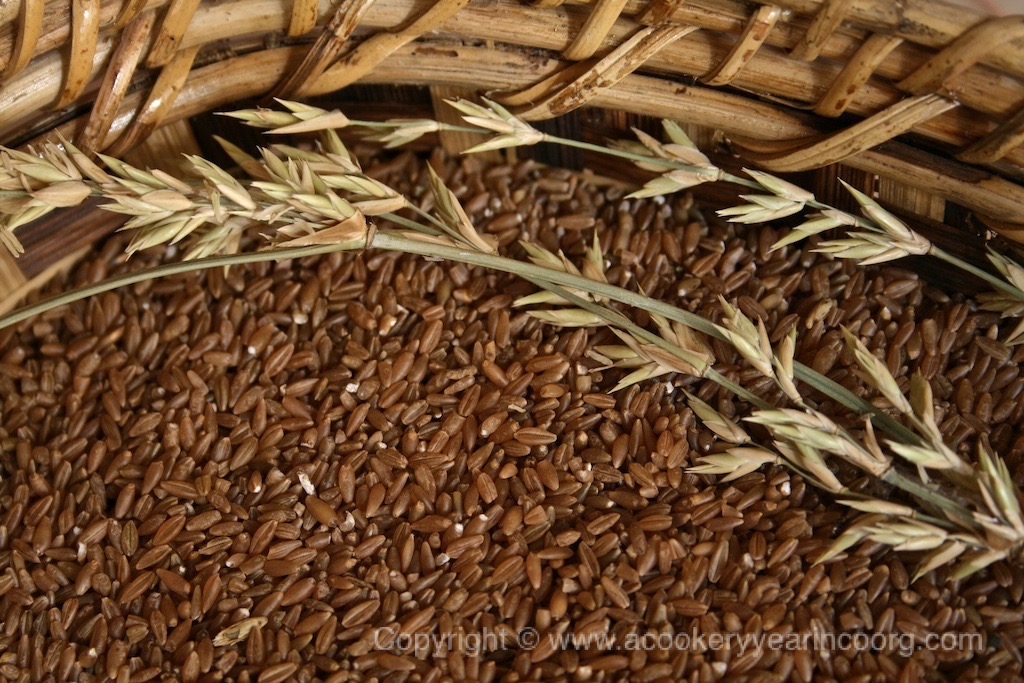
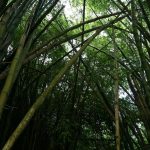
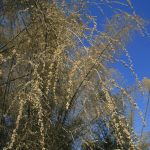

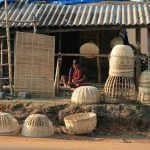
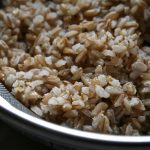
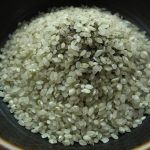
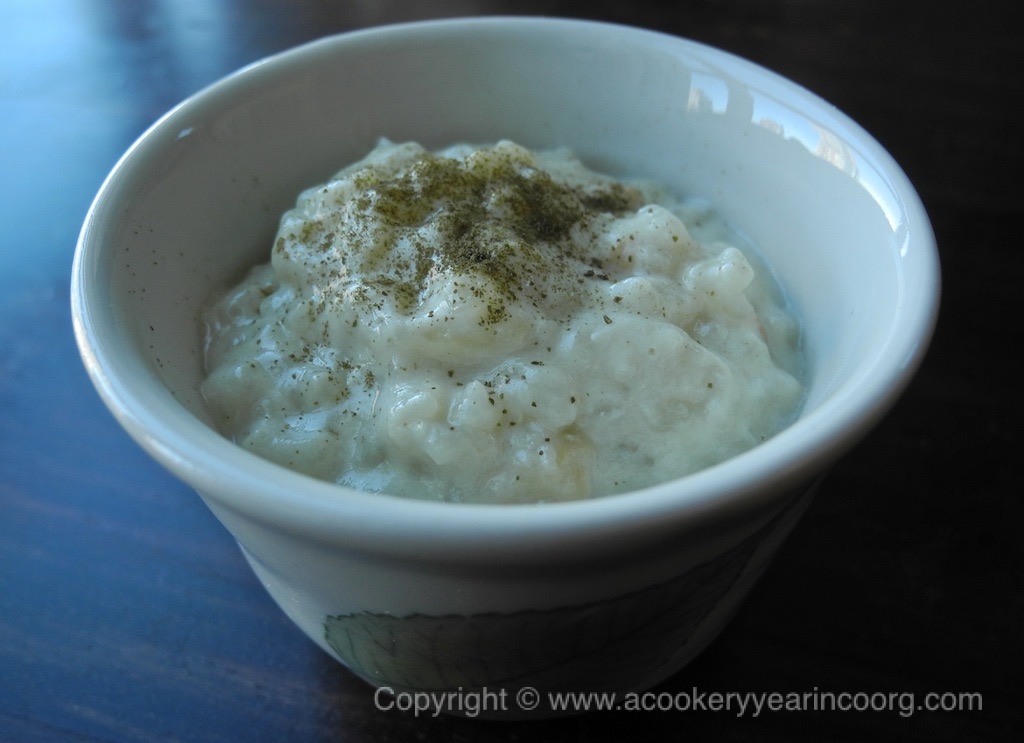
Fascinating piece (as always) Shlini. Reminds me of the Sangam poems that describe cooking tinai (that is what called bamboo rice).
Thank you, Ammini 🙂 I wonder if there are any recorded recipes using this grain. I was expecting it to taste like red or brown rice, and was quite surprised to note the wheaty flavour.
I’m guessing the payasm made with it would be very much like godhuma payasam. The way people have been snapping it up, the rats don’t stand much of a chance!
The engineered “bamboo rice” is definitely one to try, and if I can find a good brand that retains more colour and flavour, it’s going to be green payasam all the way, in this household!
What a fascinating post . You never fail to amaze ! Never thought of the effect that vast tracts of dries bamboo would have on the subsistence of the Elephants. It is truly a depressing sight to see the towering majestic green bamboo transformed into a sad dry mass. Love you experimentation with Bamboo rice . Thanks for the links , they are a most interesting read.
Thanks Jyoti! I hope that first article doesn’t give you rat filled nighmares… Did you get to try some bamboo rice? Btw, your GPS should have taken you right by that lady making baskets! 😉
No nightmares full of rats let the Boy from Hamlyn deal with them . No time yet to get the bamboo rice and no luck with the Meda women either ,fail , fail, fail 🙁 . No wonder they look at the flowering of the bamboo as a sign of doom , loss of so much green cover , the rat menace . I had to google a bit and I read in Wiki ( where else “If the soil changes in humidity or nutrition in such a way that the plants have difficulty growing, they will start to blossom. After the blossom, the flowers produce fruit, which the Chinese called “bamboo rice”. ) is this really the case or will they blossom and eventually die in any case at the end of the life cycle .
You are a mine of knowledge :-). Thanks – I’m off to hunt for bamboo rice now 😉
Thank you for this information nicely explained I search a lot for this bamboo rice for may friend it purchase form NatureLoc via on line
You”re welcome, anaswara! I’m glad you were able to find some bamboo rice.That site has some interesting products.